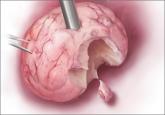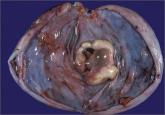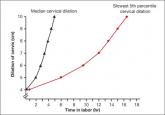From the Editor

Benefits and pitfalls of open power morcellation of uterine fibroids
The current practice of open power morcellation is being scrutinized by those within and outside of the ObGyn community. We need to re-examine our...
Trend toward longer labors is not progress
I would like to mention several points not raised in Dr. Barbieri’s editorial on 21st Century labor “norms.” First, the question is not how long the labor is but whether it involves continuous descent. If the fetus does not come down, it won’t come out. Guidelines are useful only for those obstetric care providers who lack the experience to make that judgment.
When cesarean delivery follows a long second stage, the surgery is difficult and dangerous because the anatomy is distorted, and tissues are friable and often infected.
Further, a long second stage is associated with increased rates of stress urinary incontinence, uterine and vaginal prolapse, and even postpartum fistula.
Long labors also are associated with an increased risk of postpartum hemorrhage. All of the postpartum hysterectomies I have seen performed in the past few years have followed long labors.
Long labors—especially a long second stage—are associated with increased rates of fetal infection and birth trauma and, therefore, an increased risk of cerebral palsy and NICU admission.
I strongly suspect that if one calculated the costs correctly, a very long labor (>24 hr) would be much more expensive than a scheduled cesarean delivery.
In my opinion, this trend toward longer labors is not progress. Approaching it as such is, in many ways, misguided.
Robert D. Dyson, MD, PhD
Portland, Oregon
Dr. Barbieri responds
I appreciate Dr. Dyson’s wise warnings. In my editorial, I did not focus adequately on the potential pitfalls of permitting long labors. I agree that the longer the second stage, the more likely that fetal and maternal complications will ensue. More information is needed to assess the safety of permitting a prolonged second stage.
In the past, I felt very uncomfortable permitting a second stage lasting longer than 3 hours. However, based on recent reports, my current practice is to be patient and permit the second stage to continue for up to 4 hours or longer.
WE WANT TO HEAR FROM YOU!
Drop us a line and let us know what you think about this or other current articles, which topics you'd like to see covered in future issues, and what challenges you face in daily practice. Tell us what you think by emailing us at: obg@frontlinemedcom.com Please include your name, city and state.

The current practice of open power morcellation is being scrutinized by those within and outside of the ObGyn community. We need to re-examine our...
The most promising alternative to open power morcellation is morcellation in a bag, described here

Can resection of an ovarian teratoma reverse this patient’s disabling brain disease?

We are in a new era. Our patients, and their labors, have changed on a global scale. To optimally manage labor you need to use these new norms in...
